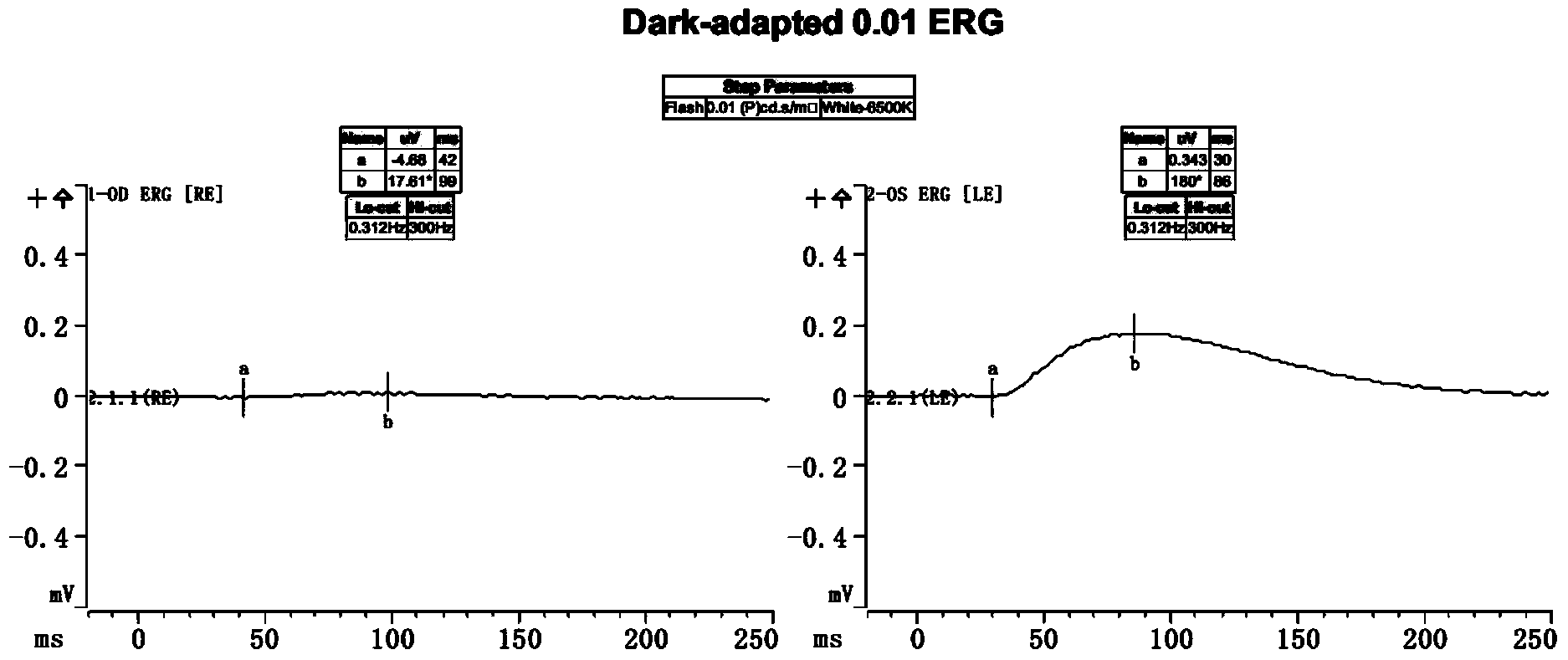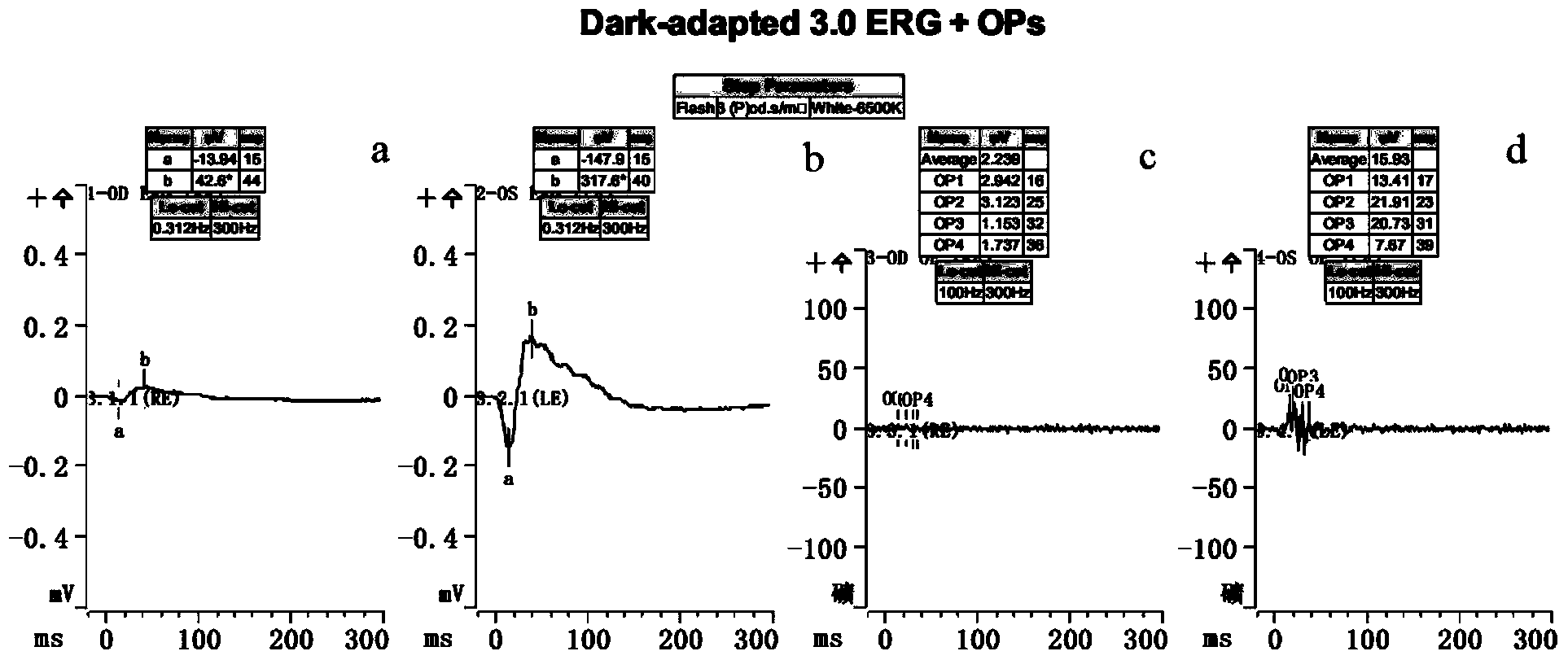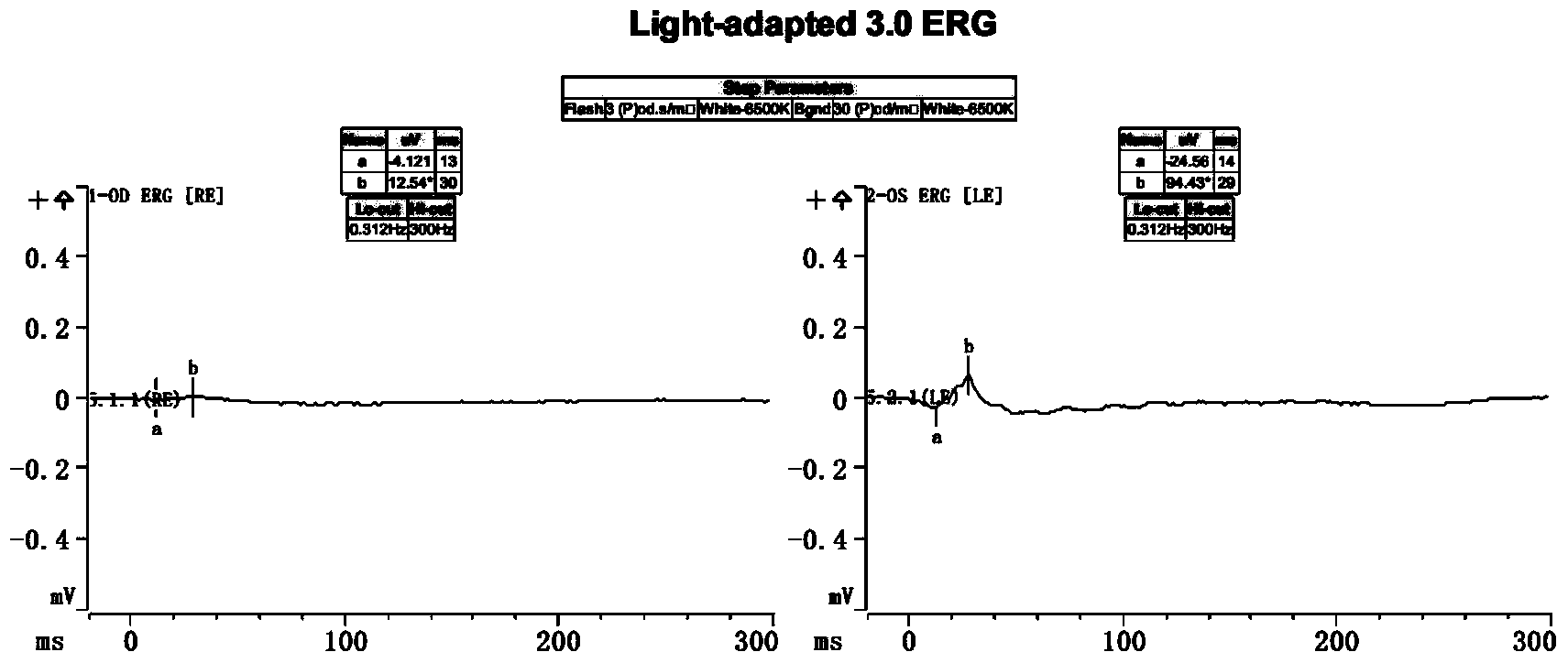Production method of model for retinitis pigmentosa disease of primate
A primate, retinal pigment technology, applied in the field of making a primate retinitis pigmentosa disease model, can solve the problems of damage to animal rights, waste of experimental animals, increase the difficulty of experiments, etc., to achieve high modeling success rate, guarantee Effects of animal welfare, avoidance of systemic injury
- Summary
- Abstract
- Description
- Claims
- Application Information
AI Technical Summary
Problems solved by technology
Method used
Image
Examples
Embodiment 1
[0030] Example 1 A model of retinitis pigmentosa in cynomolgus monkeys was established by injecting sodium iodate into the carotid artery.
[0031] Objective: To establish a model of retinitis pigmentosa in cynomolgus monkeys by injecting sodium iodate into the carotid artery, and to screen out the appropriate dose for modeling.
[0032] Experimental Materials:
[0033] Main reagents:
[0034] Anesthetics: 50mg / ml ketamine hydrochloride, 3% pentobarbital sodium
[0035] Disinfection medicine: 5.0g / L povidone-iodine
[0036] Modeling drugs: sodium iodate (Sigma, batch number: S4007), in a dark room environment, the sodium iodate powder was melted to a concentration of 10 mg / ml with 0.9% sterile saline, and filtered with a 0.22 μm filter.
[0037] Fundus fluorescence contrast agent: sodium fluorescein injection (Lishede) 500mg / 5ml / bottle
[0038] Main instruments:
[0039] YZ5F slit lamp microscope (Hangzhou Liuliu)
[0040] Espion Visual Electrophysiology Apparatus (Diagn...
PUM
 Login to View More
Login to View More Abstract
Description
Claims
Application Information
 Login to View More
Login to View More - R&D
- Intellectual Property
- Life Sciences
- Materials
- Tech Scout
- Unparalleled Data Quality
- Higher Quality Content
- 60% Fewer Hallucinations
Browse by: Latest US Patents, China's latest patents, Technical Efficacy Thesaurus, Application Domain, Technology Topic, Popular Technical Reports.
© 2025 PatSnap. All rights reserved.Legal|Privacy policy|Modern Slavery Act Transparency Statement|Sitemap|About US| Contact US: help@patsnap.com



